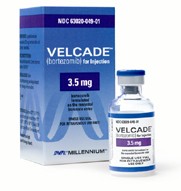
Recently Diagnosed or Relapsed? Stop Looking For a Miracle Cure, and Use Evidence-Based Therapies To Enhance Your Treatment and Prolong Your Remission
Multiple Myeloma an incurable disease, but I have spent the last 25 years in remission using a blend of conventional oncology and evidence-based nutrition, supplementation, and lifestyle therapies from peer-reviewed studies that your oncologist probably hasn't told you about.
Click the orange button to the right to learn more about what you can start doing today.
- You are here:
- Home »
- Blog »
- Multiple Myeloma »
- Myeloma Stage 2- Newly Dx’ed – Anemia, Infections
Myeloma Stage 2- Newly Dx’ed – Anemia, Infections

“People with myeloma stage 2 can experience fatigue due to the low red blood cell count caused by the cancer. “Anemia” is the term used to describe a low count of these cells…”
Hi David- I’m 43 and have just been diagnosed with myeloma stage 2. My MRI came back clear and kidney function is ok. The symptoms I’m having are anemia and infections, a bone marrow biopsy showed 60% plasma cells.
The oncologist has advised me to start Velcade, Thalidomide, Dexamethason chemo then to have 2 stem cell transplant. Without this treatment I’ve been given 12 months to live and with it 2-5 years.
I’m keen to thoroughly research every available option and am writing to ask if you could possibly send me some information on any alternatives. Many thanks in advance. Andrea
Hi Andrea- I am sorry to read of your myeloma stage 2 diagnosis. Several things.
- You are young as MMers go.
- No bone involvement and
- No kidney involvement are good.
- Your age, kidney and bone health are all positive prognostic indicators.
- anti-MM nutrition to
- frequent, moderate exercise to
- anti-MM supplementation to
- evidence-based, mind-body therapies to
- evidence-based, non-conventional bone health therapies
- MM Survivor
- MM Cancer Coach
- Director PeopleBeatingCancer
Recommended Reading:
- Multiple Myeloma-Side Effects Can Lead to Dose Reduction
- Cautious Optimism for CAR-T Cell Therapy in Multiple Myeloma
- Autologous Stem Cell Transplant- NO OVERALL SURVIVAL for Myeloma
- Survival Rates for Multiple Myeloma
Why Do People with Multiple Myeloma Have Anemia?
“People with multiple myeloma (stage 2) can experience fatigue due to the low red blood cell count caused by the cancer. “Anemia” is the term used to describe a low count of these cells…
Anemia and multiple myeloma go hand in hand. Multiple myeloma triggers an overgrowth of plasma cells in the bone marrow. Plasma cells are white blood cells that produce and secrete antibodies. Too many of these cells in the bone marrow crowd and decrease the number of normal blood-forming cells. This response causes a low red blood cell count.
The condition can be mild, moderate, severe, or life-threatening. Red blood cells contain hemoglobin. Hemoglobin carries oxygen from the lungs to different parts of the body. Your doctor may diagnose anemia if your hemoglobin level is below normal. For women, a normal hemoglobin level is 12 to 16 grams per deciliter (g/dL). For men, a normal level is 14 to 18 g/dL…”
What are the signs and symptoms of multiple myeloma?
- “Fatigue. Healthy cells allow your body to fight invading germs easily. As myeloma cells replace bone marrow, your body has to work much harder with fewer disease-fighting cells, and you tire more easily.
- Low blood counts. Myeloma cells crowd out healthy blood cells, leading to low red blood counts (anemia) and low white blood cells (leukopenia). Unhealthy blood cell levels make it harder to fight infections.
- Frequent infections. Fewer antibodies in your blood make fighting infections more difficult.


